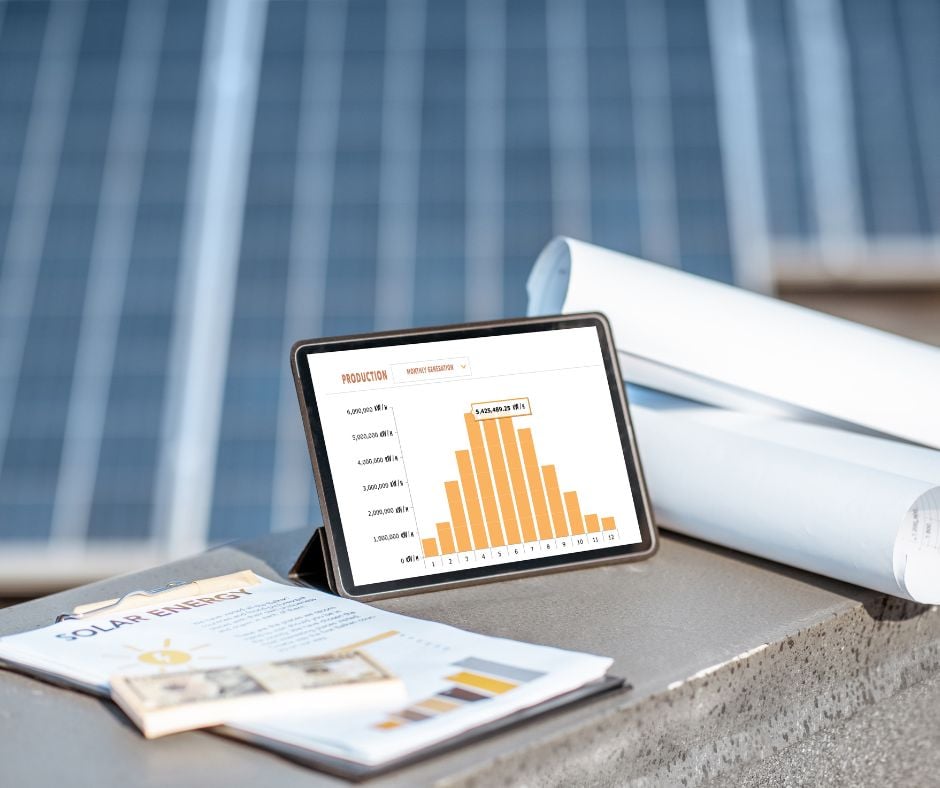
Every business that occupies a building uses electricity. Whether electricity is used for computers, lights, manufacturing or to power a fleet; electricity is integral to performing day to day functions. However, as the person who pays the bills every month, you may not be aware of how you are charged for electricity. You may not know whether you’re paying a fair rate, what options in billing you have or how to assess your regular energy consumption data to make informed decisions about purchasing electricity. Read on to discover how to know whether you’re being overcharged or you’re missing opportunities to lower your commercial electric bills.
The Difference Between Power and Energy and How It Affects Your Bill
The first thing any business should understand is the various ways commercial power can be billed. Before we continue, allow me to explain the difference in power (kW) and energy (kWh).
Power is an instantaneous draw of electricity defined by the amperage and voltage of the draw, it is measured and billed in Kilowatts or kW.
Energy is power multiplied by time, i.e Kilowatt-hours (kWh).
To use an analogy of a water hose; power is the width of the hose and energy is the amount of water consumed through the hose.
Commercial billing is typically done using two different methods or a combination of those methods.
1. Bills based entirely on energy billing schedules (kWh) or
2. Power and light energy charge schedules.
Power Billing
When power billing is being employed there is a certain time of day that a peak can be set, for example, daytime from 11 am - 5 pm. Power billing is determined based on the month's highest kW draw during said 11-5 window. Utilities will then charge for the highest kW draw during the month for the entire month rather than the actual amount of electricity used (ie electricity billing). The rationale in this case used by the utility is to assure that the power is always available when it is needed.
Multiple Rate Schedules - Does Your Business Have the Right One?
The second thing a business should be aware of is that oftentimes utilities will offer multiple rate schedules that a business can choose from; depending on what your business does there may be a more applicable, cheaper, rate schedule available to you.
Knowing your rate schedule choices is important because it may lead to instant electricity cost savings. If operations have changed at a given location or if the location is on the original rate schedule provided by the utility company, it pays to inquire if you qualify for a different and better rate.
Rate schedules are made available based on a building’s status as a “primary” or “secondary” building on the grid. Primary buildings will own their own transformer bringing grid-level voltage down to, usually, 480v 3-phase power. Secondary buildings will not own the transformer and generally have a 208v 3-phase power system. The building status determination is made by the utility planner at the time of the building construction. As a customer of the electricity company we recommend you call and request a “rate analysis” which is an analysis prepared to show you your options or rate schedule, and if there are any potential savings to be found.
How to Access Your Power Consumption Data and Request a Rate Analysis
Finally, as a customer of the electricity company, you have the right to access your consumption data. The easiest way to see your consumption data is in your monthly bill where you can identify peak use and energy consumption figures. however, there are limitations. You will not be able to observe the time and day of energy consumption variations. This more granular data, called “interval consumption data,” is a snapshot of your consumption as detailed as every 15 minutes over the course of the year. There are generally two ways to access this data.
1. If you own a Primary Building, contact your account representative at the utility company and request the most recent year’s set of interval data, and if they will provide it in a CSV format. Secondary building owners are often left to contact general service representatives.
2. The second way to access your data is through your online billing account. Many utility account portals are set up to enable you to pull consumption reports in different capacities for different periods of time to better understand your usage.
This is the data that is commonly used by energy management platforms such as Energy Star Portfolio Manager to track consumption year to year. Having access to this data is critical for addressing energy reduction goals, renewable energy opportunities, and better understanding your business's operations.
Now that you are armed with the knowledge of how you are billed, that there may be a better rate schedule, and how to access your data, you are unstoppable in your mission to reduce your monthly electric bill. Choose the best billing method and rate to see savings in your energy costs.
Going Further to Manage Your Energy Costs
Lower rates can only go so far to lower energy costs. To really take control of your expenses, consider owning your own power. A solar system partially or completely replacing power purchased from the grid is an excellent way to keep your energy costs low.
See our article on ways to finance a solar energy project for your business without eating up precious capital reserves.

If you or another business is interested in having an undeniable impact on your triple bottom line give us a call for a free consultation to see if solar is right for you! Call (248) 923-3456 or request a Free Online Solar Analysis for Your Business.
Michigan Solar Solutions is a commercial and residential solar installer and electrical contractor that has served the lower peninsula of Michigan since 2007. We have installed thousands of panels and have a happy customer near you, check out what our customers think of us Guild Quality.
Have a comment? Let us hear from you!








Have a comment? Let us hear from you!